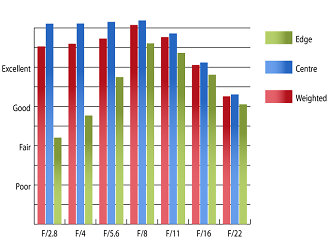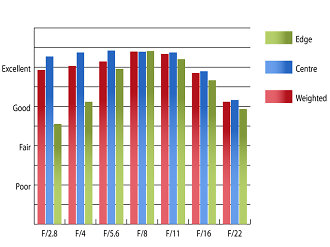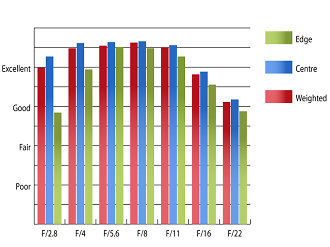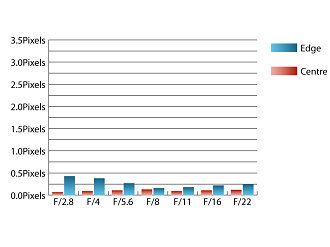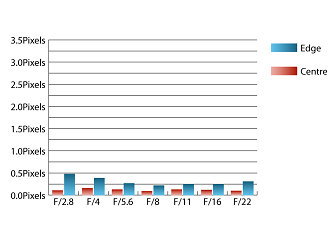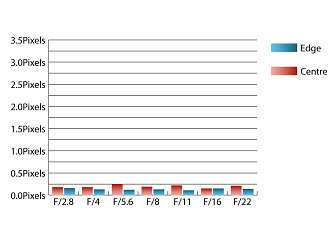Tamron SP 15-30mm f/2.8 Di VC USD Review
Tamron SP 15-30mm f/2.8 Di VC USD Performance
At maximum aperture and 15mm, sharpness in the centre is already outstanding, although the clarity towards the edges of the frame only reaches fair levels. Stopping down improves performance across the frame and towards the edges of the frame, performance reaches very good levels when stopped down to f/5.6 and peak clarity is achieved between at f/8 where sharpness across the frame is outstanding.
Zooming to 20mm results in similar performance at maximum aperture, with centre sharpness being excellent and fairly good clarity towards the edges. Sharpness improves just as it does at 15mm, with excellent sharpness across the frame being achieved at f/8.
Finally, at 30mm, the lens performs as well, if not a little better than it does at 20mm. Sharpness in the centre at maximum aperture is excellent again, with performance towards the edges of the frame falling just short of good levels. Peak performance across the frame is achieved at between f/5.6 and f/8, where resolution is outstanding across the frame.
How to read our charts
The blue column represents readings from the centre of the picture frame at the various apertures and the green is from the edges. Averaging them out gives the red weighted column.The scale on the left side is an indication of actual image resolution. The taller the column, the better the lens performance. Simple.
For this review, the lens was tested on a Canon EOS 5D Mark III using Imatest.
For a wide angle lens like this, control of chromatic aberrations is outstanding, thanks to Tamron's use of LD glass in the optical design. Fringing is most prevalent at 15mm and maximum aperture, although it remains well below half a pixel width. This level of fringing should barely be visible, even in areas of high contrast towards the edges of the frame.
How to read our charts
Chromatic aberration is the lens' inability to focus on the sensor or film all colours of visible light at the same point. Severe chromatic aberration gives a noticeable fringing or a halo effect around sharp edges within the picture. It can be cured in software.Apochromatic lenses have special lens elements (aspheric, extra-low dispersion etc) to minimise the problem, hence they usually cost more.
For this review, the lens was tested on a Canon EOS 5D Mark III using Imatest.
Falloff of illumination towards the corners of the frame is also well controlled for a lens this wide with an f/2.8 aperture. At 15mm, the corners are 1.7 stops darker than the image centre and at 30mm the corners are 1.5stops darker. Stopping down to f/5.6 results in visually uniform illumination across the frame throughout the zoom range.
Distortion is typical for a lens of this type. At 15mm, 6.14% barrel distortion is present, which is replaced with 1.5% pincushion distortion at 30mm. Unfortunately, there is a slight wave to the distortion, which may make a correction more difficult to apply in software afterwards.
During testing, there were few issues with flare and ghosting, even when shooting into the light. A petal shaped is permanently attached to the lens, which does as good a job as it can of protecting the front element from extraneous light, considering the extreme angle of view on offer.
Value For Money
At release, this lens will retail for around £950, which is pretty reasonable, given the excellent sharpness the lens can deliver.
Canon's closest equivalent is their 16-35mm f/2.8L II USM lens, which costs around £1080, lacks image stabilisation and is a little less wide angle than the Tamron.
Nikon's well regarded 14-24mm f/2.8G lens costs around £1300, and is a little wider angle, but also lack vibration reduction.
Tokina's 16-28mm is the closest equivalent from third party manufacturers. Although this lens is less expensive at £700, it lacks silent focusing and vibration compensation.
Add your message
Please login here or if you've not registered, you can register here. Registering is safe, quick and free.
photodo Stats
428 MTF tests
74 in-depth photodo reviews
100+ users join each day
Help the lens community by reviewing or rating a lens today via our lens search
Latest Lens Reviews
- Chinon 28mm f/2.8 Vintage Lens Review
- Canon EF 70-200mm f/4L IS II USM Lens Review
- Samyang AF 85mm f/1.4 EF Review
- Sigma 70mm f/2.8 DG Macro Art Review
- Samyang AF 24mm f/2.8 FE Review
- Meike 50mm f/1.7 Review
- Tamron 70-210mm f/4 Di VC USD Review
- Lensbaby Burnside 35mm f/2.8 Review
- Asahi Super Takumar 50mm f/1.4 Review
- Asahi Super-Multi-Coated Takumar 135mm f/3.5 Review
